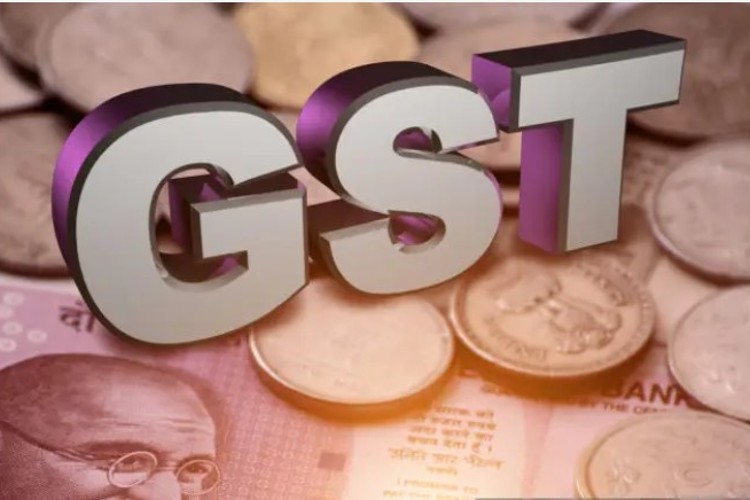
Ever since the rollout of the goods and services tax, India has witnessed a steady uptick in tax collections — figures the government unfailingly showcases each month with considerable fanfare. April 2025 was no different. GST collections soared to a record Rs 2.37 lakh crore, marking a 12.6% year-on-year rise. After accounting for refunds, net collections stood at Rs 2.09 lakh crore, a 9.1% increase from the previous year.
While April’s numbers are eye-catching, a closer look reveals a recurring seasonal pattern rather than a sign of sustained consumption growth. Every year, April tends to produce a peak in collections, followed by a moderation in subsequent months. In April 2024, the collections had touched Rs 2.10 lakh crore — then a record high.
READ | India-Pakistan conflict is a trap, New Delhi must sidestep it
More hype than trend
This surge largely reflects transactions from March — the financial year-end — when businesses reconcile their accounts, file returns, and clear backlogs. Increased compliance activities and final settlement of accounts routinely inflate April’s GST figures.
Some analysts also point to a rush in March to beat international policy deadlines. This year, exporters reportedly front-loaded shipments to sidestep looming tariff hikes under the US ‘Liberation Day’ trade policy, contributing to a notable rise in import revenues and subsequent refunds.
A record that fizzles out
Despite the celebratory headlines, April’s figures are rarely surpassed later in the fiscal year. From May 2024 to March 2025, average monthly GST collections stood at Rs 1.82 lakh crore — far below the April spike. This suggests that the surge is more reflective of year-end compliance than robust underlying demand.
Worryingly, the buoyancy of GST — its ability to grow in line with nominal GDP — has been on the decline. While GST collections have climbed from Rs 12.2 lakh crore in FY20 to Rs 22.1 lakh crore in FY25, the pace of growth has slowed considerably. The 34% surge in FY22 and 21% in FY23 was driven more by high wholesale inflation than consumption strength. As inflation normalised, so did the momentum.
In FY24 and FY25, GST buoyancy fell below 1 — down from a high of 1.64 in FY22 — meaning GST growth is now lagging GDP growth. While overall tax buoyancy hovers around 1.1, GST’s underperformance suggests that India’s consumption engine is sputtering.
Gross vs net: A glaring gap
Another point of concern is the growing divergence between gross GST collections and net revenues. Gross figures, often highlighted in government press releases, conceal the sizable outflows in refunds — particularly to exporters. In April 2025, refunds surged 86% compared to the previous year, significantly reducing the central government’s actual revenue.
It is only recently that the government began disclosing net collections and refund details — a move spurred by criticism from fiscal experts over the lack of transparency.
This widening gap limits fiscal flexibility. A notional increase in collections, if offset by refunds, fails to bolster the government’s spending power — a fact often glossed over in public discourse.
A compliance story, not a consumption story
To be sure, GST collections have indeed grown, aided by stronger compliance and technological adoption. India’s fintech revolution — with an adoption rate of 87%, well above the global average — has brought millions of small businesses into the formal tax net. Even the COVID-19 years played an unexpected role, pushing MSMEs toward formal banking systems and digital record-keeping.
This shift is evident in the broader trend: April collections have more than doubled from Rs 1.03 lakh crore in 2018 to Rs 2.37 lakh crore in 2025. However, this should be seen as a compliance success — not necessarily an indicator of robust consumption growth.
The April GST surge may dominate headlines, but it offers a skewed snapshot of the economy. Experts caution against celebrating these figures in isolation. A year-round view reveals a more subdued story — one of slowing momentum, especially in sectors like FMCG, automobiles, real estate, and consumer durables.
Factors behind strong GST collections growth
Hidden push of inflation: GST is a value-based tax, and as prices rise, so does the tax collected — even when actual consumption volumes remain flat. Periods of high inflation, particularly in FY22 and FY23, artificially boosted GST collections. With inflation cooling, this hidden crutch is no longer as effective, exposing the fragility of underlying demand.
Fuel and input cost pass-through: Though fuel is outside the GST ambit, rising petrol, diesel, and raw material prices inflate the cost of goods and services. This increases the final invoice value on which GST is calculated, leading to higher collections without reflecting real economic expansion.
Compliance overhaul and enforcement: Tech-driven measures such as AI-enabled audits, GSTN data integration, and improved refund processing have plugged leakages. These steps have improved compliance and widened the base of tax filers — a structural positive, but not a guarantee of sustained long-term revenue growth if consumption falters.
Demand has shown signs of tapering off since September 2024, and global economic uncertainties are likely to temper collections further in the months ahead. Policymakers would do well to treat April’s record with cautious optimism. Without addressing deeper structural issues — including inflationary pressures, weak rural demand, and faltering consumption — the GST’s potential as a simple, unified tax regime may remain unfulfilled.
The tax architecture may be sound, but its sustainability depends on a thriving consumption base. And unless India rekindles that base, the April GST surge will remain just that — a seasonal illusion, rather than a sign of real economic progress.
